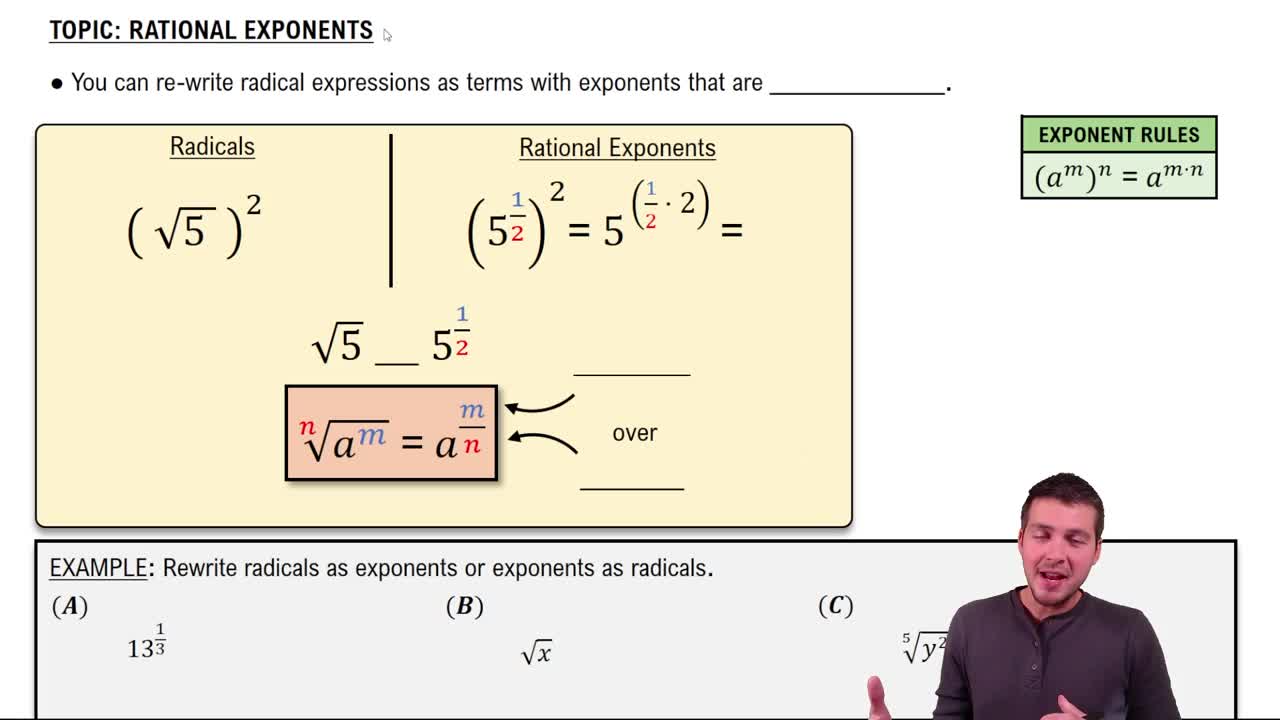Here are the essential concepts you must grasp in order to answer the question correctly.
Rational Exponents
Rational exponents are a way to express roots using fractional powers. For example, x^(1/n) represents the n-th root of x. In the given equation, the terms 2x^(2/3) and -5x^(1/3) utilize rational exponents, which can be rewritten in radical form to facilitate solving the equation.
Recommended video:
Substitution Method
The substitution method involves replacing a complex expression with a simpler variable to make solving easier. In this case, letting y = x^(1/3) transforms the equation into a quadratic form, allowing for straightforward application of factoring or the quadratic formula to find solutions.
Recommended video:
Choosing a Method to Solve Quadratics
Quadratic Equations
Quadratic equations are polynomial equations of the form ax^2 + bx + c = 0, where a, b, and c are constants. They can be solved using various methods, including factoring, completing the square, or the quadratic formula. Understanding how to manipulate and solve these equations is crucial for finding the roots of the transformed equation in the problem.
Recommended video:
Introduction to Quadratic Equations
 Verified step by step guidance
Verified step by step guidance Verified Solution
Verified Solution

